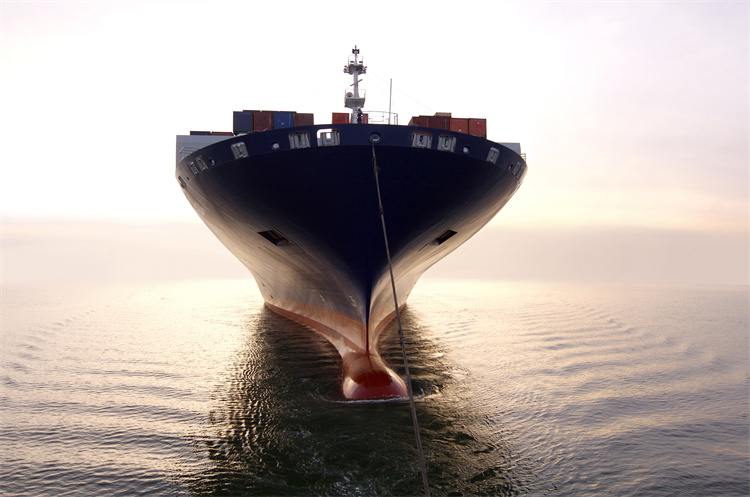Key Challenges for Ocean Freight in 2025

The 2025 ocean freight forecast reveals a turbulent landscape shaped by economic shifts, geopolitical tensions, and environmental challenges. The ocean freight market faces mounting pressures from rising risks, including labor strikes and capacity miscalculations. These factors threaten to disrupt the global supply chain, creating future market disruptions. Stakeholders must adopt proactive strategies to address the key questions facing ocean container shipping. With global container volumes fluctuating and a space crunch on vessels, strategic planning becomes essential to mitigate risks and ensure sustainable growth in this evolving market.
Key Takeaways
Stay informed about global trade policy changes, as they can significantly impact shipping costs and routes.
Develop robust contingency plans to navigate geopolitical instability and potential disruptions in critical shipping routes.
Invest in data-driven forecasting tools to better manage economic uncertainties and fluctuating demand in the ocean freight market.
Enhance workforce development programs to address labor shortages and improve operational efficiency in port operations. Adopt advanced technologies like automation and digitalization to streamline processes and improve supply chain resilience.
Prioritize sustainability by integrating eco-friendly practices and complying with environmental regulations to meet stakeholder expectations. Collaborate with industry partners to optimize resources and share best practices, ensuring a competitive edge in a challenging market.
Economic and Geopolitical Challenges in the 2025 Ocean Freight Forecast
The Impact of Shifts in Global Trade Policies
The impact of shifts in global trade policies will significantly influence the ocean freight market in 2025. Changes in tariffs, trade agreements, and protectionist measures could reshape global trade flows. For instance, new regulations or restrictions may alter volumes of goods transported between key regions. These shifts often lead to increased operational costs for shippers, as they must adapt to new compliance requirements and reroute shipments to avoid heavily taxed regions.
Moreover, shifts in global trading patterns could create imbalances in supply and demand. Some regions may experience a surge in exports, while others face reduced activity. This uneven distribution of trade flows can strain shipping alliances, forcing them to adjust their strategies to maintain profitability. Major changes to alliances among shipping companies may emerge as they seek to optimize routes and share resources to mitigate these challenges.
Navigating Geopolitical Instability and Regional Conflicts
Geopolitical instability poses a significant threat to the ocean freight industry. Conflicts in regions like the Middle East could disrupt critical shipping routes, such as the Suez Canal. Vessels transiting these areas face heightened risks, including delays, increased insurance premiums, and potential rerouting. Such disruptions not only impact shipping schedules but also inflate costs for businesses relying on timely deliveries.
Regional conflicts may also lead to port closures or reduced activity, further straining the global supply chain. For example, tensions in strategic maritime chokepoints can force carriers to seek alternative routes, which often involve longer transit times and higher fuel consumption. These challenges highlight the need for robust contingency planning and collaboration among stakeholders to ensure supply chain resilience.
Addressing Economic Uncertainty and Inflation in the Ocean Freight Market
Economic uncertainty and rising inflation will continue to challenge the ocean freight market in 2025. Inflation drives up operational expenses, including fuel, labor, and maintenance costs. These increased costs often translate to higher shipping rates, placing additional pressure on businesses and consumers. The forecast for 2025 suggests that fluctuating demand and capacity miscalculations could exacerbate these issues, leading to further market volatility.
Shippers must also contend with the broader economic environment, where slowing growth in some regions may reduce trade volumes, while others experience surges. This uneven demand complicates capacity planning and pricing strategies. To navigate these uncertainties, companies must invest in data-driven forecasting tools and strengthen their partnerships within the industry. By doing so, they can better anticipate market trends and adapt to changing conditions.
Operational Challenges in the Ocean Freight Market
Labor Strikes and Workforce Shortages
Labor strikes and workforce shortages present significant challenges for the ocean shipping industry. Strikes disrupt port operations, delaying cargo handling and vessel schedules. Workforce shortages further exacerbate these delays, as ports struggle to maintain efficiency with fewer workers. According to a Dimerco survey of over 100 supply chain executives, labor-related disruptions remain a top concern for industry stakeholders.
The ocean shipping industry relies heavily on skilled labor for tasks such as cargo loading, unloading, and vessel maintenance. A shortage of trained personnel can lead to operational inefficiencies, increasing costs for shippers. Additionally, labor disputes often arise from wage disagreements or working conditions, creating uncertainty for businesses dependent on timely deliveries. To address these issues, companies must invest in workforce development programs and foster better communication with labor unions.
Managing Capacity Constraints and Port Congestion
Capacity constraints and port congestion continue to challenge the ocean shipping industry. As global trade volumes fluctuate, ports often struggle to accommodate the surge in container traffic. This results in longer wait times for vessels and increased operational costs. A Xeneta report highlights that real-time tracking and monitoring of shipments have become essential for managing these disruptions effectively.
Port congestion also stems from infrastructure limitations and inefficient processes. For instance, outdated equipment and inadequate storage facilities can slow down cargo handling. The ripple effects of congestion impact the entire supply chain, causing delays in product delivery and higher transportation costs. To mitigate these challenges, stakeholders must adopt advanced technologies such as automated cargo handling systems and predictive analytics for better capacity planning.
Overcoming Infrastructure Limitations in Key Shipping Regions
Infrastructure limitations in key shipping regions hinder the efficiency of the ocean shipping industry. Many ports lack the necessary facilities to handle large vessels or increased container volumes. This creates bottlenecks, slowing down the movement of goods and increasing costs for shippers. A qualitative research study with industry representatives revealed that tracking the volume of twenty-foot equivalent units (TEUs) is critical for identifying and addressing these limitations.
Regions with underdeveloped infrastructure face additional challenges, such as inadequate road and rail connections to ports. These issues disrupt the seamless flow of goods, impacting global trade. To overcome these obstacles, governments and private entities must collaborate on infrastructure development projects. Investments in modernizing ports, expanding storage capacities, and improving connectivity can enhance the overall efficiency of the ocean shipping industry.
Environmental and Regulatory Pressures Shaping the 2025 Ocean Freight Forecast

Decarbonization and Compliance with Environmental Standards
The shipping industry faces mounting pressure to decarbonize operations and comply with stringent environmental standards. The International Maritime Organization (IMO) has set ambitious sustainability goals, urging carriers to reduce greenhouse gas (GHG) emissions significantly. Shipowners have responded by adopting innovative measures, including retrofitting vessels, integrating digital technologies, and transitioning to alternative fuels.
Cleaner fuels, such as liquefied natural gas (LNG), offer a viable short-term solution for reducing emissions. However, long-term compliance with CO2 limits requires further advancements in alternative fuel technologies. The maritime sector must explore options like hydrogen, ammonia, and biofuels to meet future regulatory demands. Additionally, the adoption of energy-efficient ship designs and propulsion systems can further enhance sustainability efforts.
Key Insight: A study published in Frontiers in Energy Research highlights that technically and economically viable technologies already exist for reducing emissions in shipping. These innovations pave the way for a cleaner and more sustainable future in ocean freight.
Balancing Rising Compliance Costs with Profitability
Meeting environmental standards often comes with significant financial implications. Retrofitting vessels, adopting alternative fuels, and implementing green technologies increase operational costs for shipping companies. Balancing these rising expenses with profitability remains a critical challenge for the industry.
Shipping companies must adopt cost-effective strategies to mitigate these financial pressures. Collaborative efforts, such as sharing resources and optimizing routes, can help reduce fuel consumption and operational expenses. Investments in digital tools, such as predictive analytics and real-time monitoring systems, enable carriers to improve efficiency and minimize waste.
Industry Trend: The adoption of Environmental, Social, and Governance (ESG) practices has gained momentum in the shipping industry. Companies prioritizing ESG initiatives often achieve long-term cost savings and enhanced brand reputation, despite initial investments.
Meeting Stakeholder Demands for Sustainability and Transparency
Stakeholders, including customers, investors, and regulators, increasingly demand greater sustainability and transparency from the shipping industry. Businesses must demonstrate their commitment to reducing environmental impact while maintaining operational efficiency. Transparent reporting on carbon emissions and sustainability initiatives has become a key expectation.
Digital platforms play a crucial role in meeting these demands. Tools like IoT-enabled tracking systems and blockchain technology enhance supply chain visibility, allowing stakeholders to monitor environmental performance in real time. Companies that embrace these technologies gain a competitive edge by building trust and fostering stronger relationships with their partners.
Emerging Practice: Many shipping companies now integrate green initiatives into their core operations. These efforts not only align with stakeholder expectations but also contribute to achieving global sustainability goals.
The ocean freight industry stands at a pivotal moment, where environmental and regulatory pressures demand transformative action. By embracing innovation, adopting cleaner technologies, and fostering collaboration, the sector can navigate these challenges while paving the way for a sustainable future.
Technological and Strategic Opportunities for the Ocean Freight Market

Leveraging Digitalization and Automation for Operational Efficiency
The ocean freight industry is undergoing a significant transformation through digitalization and automation. These advancements streamline operations, reduce errors, and enhance overall efficiency. Technologies such as artificial intelligence (AI), robotic process automation (RPA), and the Internet of Things (IoT) are becoming integral to modern shipping practices. AI enables predictive analytics, allowing companies to forecast demand and optimize routes. RPA automates repetitive tasks, minimizing human error and saving time. IoT enhances transparency by providing real-time tracking of shipments, which improves supply chain visibility.
Digitalization also addresses long-standing inefficiencies in freight forwarding. Manual processes, often time-consuming and prone to errors, are being replaced with automated systems. This shift reduces operational costs and accelerates workflows. For instance, tools like RFID and GPS improve cargo monitoring, while blockchain ensures secure and transparent documentation. These innovations not only improve operational efficiency but also elevate customer satisfaction by providing accurate and timely updates.
Insight: A growing number of freight forwarders are leveraging digital tools to monitor emissions, optimize fuel consumption, and enhance sustainability. These efforts align with global environmental goals while improving cost management.
Enhancing Supply Chain Flexibility and Resilience
Supply chain flexibility and resilience have become critical priorities for the ocean freight market. Disruptions such as geopolitical tensions, labor strikes, and port congestion highlight the need for adaptive strategies. Digitalization plays a pivotal role in addressing these challenges. Predictive analytics, powered by AI, helps companies anticipate potential disruptions and develop contingency plans. Real-time data sharing through IoT-enabled platforms ensures seamless communication among stakeholders, enabling quicker responses to unforeseen events.
Automation further strengthens supply chain resilience by reducing dependency on manual labor. Automated cargo handling systems and digital twins allow companies to simulate and optimize operations, ensuring smooth workflows even during peak demand periods. These technologies also support dynamic route adjustments, helping shippers avoid delays caused by congestion or adverse weather conditions.
They can adapt to market fluctuations, maintain service reliability, and build stronger relationships with their partners through technological trends.
JUSDA’s Role in Driving Innovation and Sustainability in the Ocean Freight Market
JUSDA stands at the forefront of innovation and sustainability in the ocean freight industry. The company leverages advanced technologies to deliver efficient and reliable supply chain solutions. Its JusLink intelligent supply chain platform integrates IoT, cloud computing, and big data to enhance visibility and collaboration. This platform enables real-time tracking, predictive analytics, and seamless information sharing, empowering clients to make informed decisions.
JUSDA’s commitment to sustainability aligns with global environmental standards. The company adopts eco-friendly practices, such as optimizing routes to reduce fuel consumption and implementing green warehousing solutions. These initiatives not only minimize environmental impact but also help clients achieve their sustainability goals. By combining innovation with a focus on sustainability, JUSDA creates opportunities for businesses to thrive in a rapidly evolving market.
By prioritizing collaboration and innovation, JUSDA positions itself as a trusted partner in navigating the complexities of the ocean freight market.

JUSDA Solutions
To provide you with professional solutions and quotations.
The 2025 ocean freight landscape presents a dynamic mix of challenges and opportunities. Economic shifts, operational hurdles, and environmental demands require stakeholders to adopt innovative strategies. Embracing sustainability and leveraging advanced technologies will be critical for success.
JUSDA, with nearly two decades of expertise in lean supply chain management, offers end-to-end solutions tailored to evolving market needs. Its JusLink intelligent platform enhances visibility and efficiency, empowering businesses to adapt and thrive. By prioritizing collaboration and innovation, JUSDA positions itself as a trusted partner in navigating the complexities of the global ocean freight market.
See Also
Discovering 2024 Innovations in Sea Freight Logistics
Five Key Trends Shaping Future Supply Chain Efficiency
Understanding Current Trends in Logistics Risk Management
Transforming Logistics: The Role of Digital Technology Ahead
Preparing for Tomorrow: New Transport Technologies in Supply Chains
